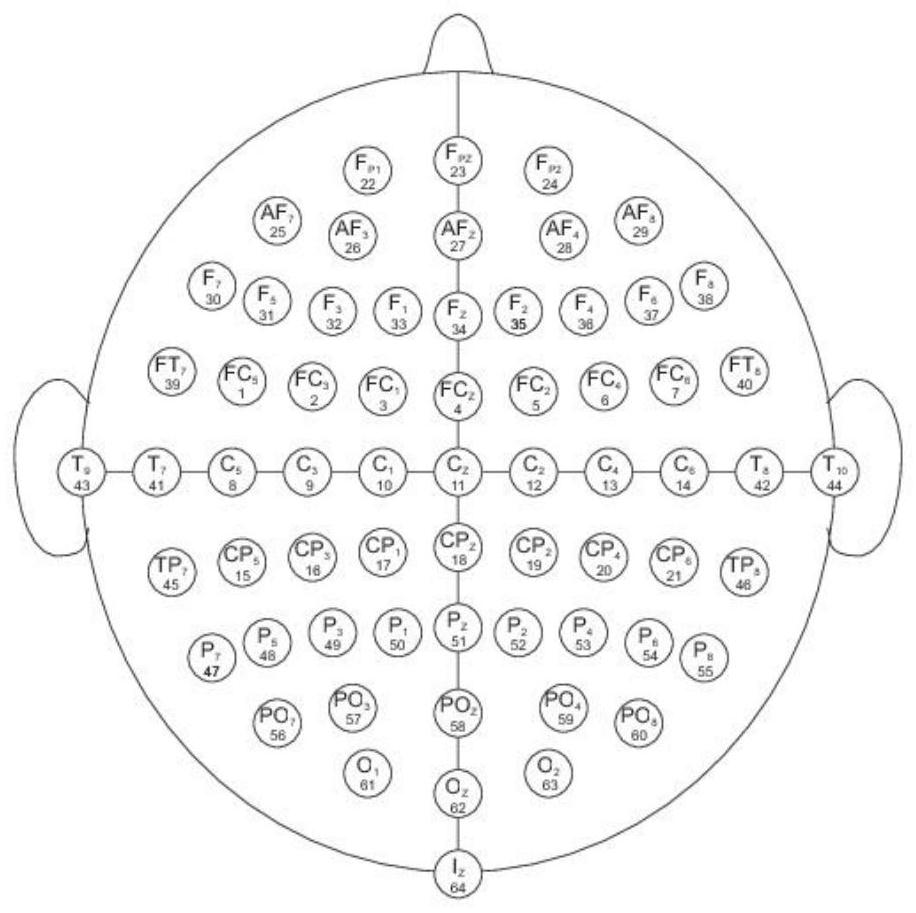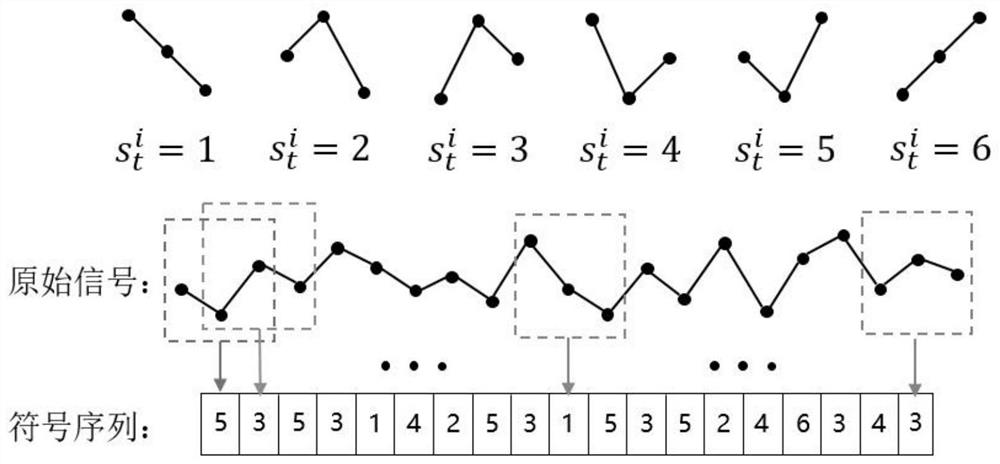A method for calculating symbol transfer entropy and brain network characteristics based on time-frequency energy
A technology of feature calculation and transfer entropy, applied in sensors, diagnostic recording/measurement, medical science, etc., can solve the problems of being easily affected by noise, slow calculation speed, and low classification accuracy, and achieve the effect of improving classification accuracy
- Summary
- Abstract
- Description
- Claims
- Application Information
AI Technical Summary
Problems solved by technology
Method used
Image
Examples
Embodiment Construction
[0057] The software environment of the specific experiment of the present invention is: Windows 10 (64-bit), Matlab R2017a.
[0058] The MI-EEG data of the embodiment of the present invention comes from the BCI 2000 public data set, and 64 electrodes under the standard 10-20 system distribution are used to collect EEG data. The electrode distribution positions are as follows: figure 2 shown. The EEG signal sampling frequency is 160Hz, which is filtered by 1-50Hz and 50Hz notch filter. The dataset contains a total of 109 subjects, and the imagining task is left-hand or right-hand movement, and each subject conducts a total of about 45 experiments. Each experiment lasted about 8 seconds, of which 0 to 4 seconds was the motor imagery period.
[0059] Based on the above MI-EEG data set, the specific implementation steps of the present invention are as follows:
[0060] Step 1: Signal preprocessing.
[0061] The original MI-EEG signal was subjected to CAR filtering to remove s...
PUM
 Login to View More
Login to View More Abstract
Description
Claims
Application Information
 Login to View More
Login to View More - R&D
- Intellectual Property
- Life Sciences
- Materials
- Tech Scout
- Unparalleled Data Quality
- Higher Quality Content
- 60% Fewer Hallucinations
Browse by: Latest US Patents, China's latest patents, Technical Efficacy Thesaurus, Application Domain, Technology Topic, Popular Technical Reports.
© 2025 PatSnap. All rights reserved.Legal|Privacy policy|Modern Slavery Act Transparency Statement|Sitemap|About US| Contact US: help@patsnap.com



